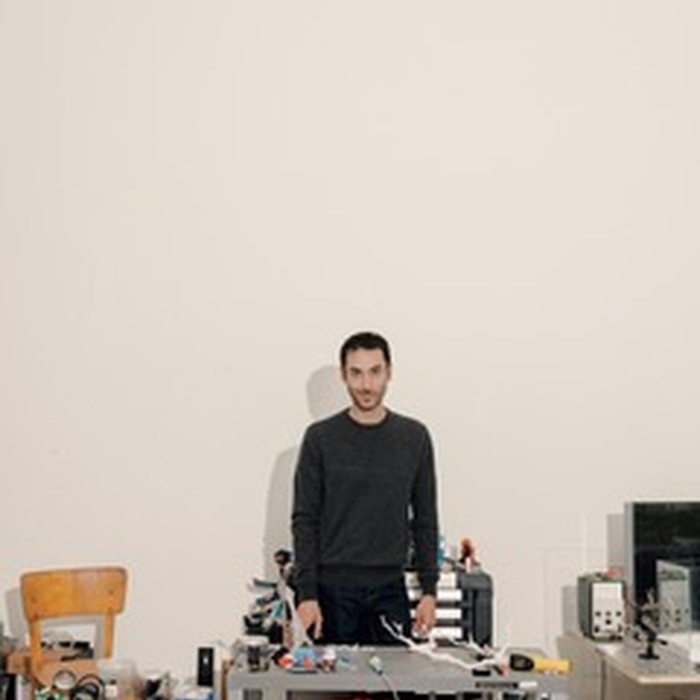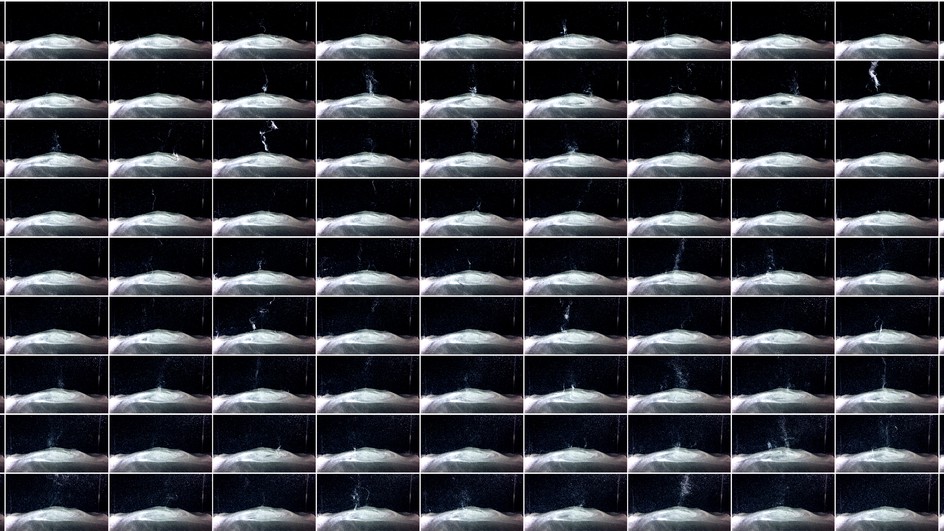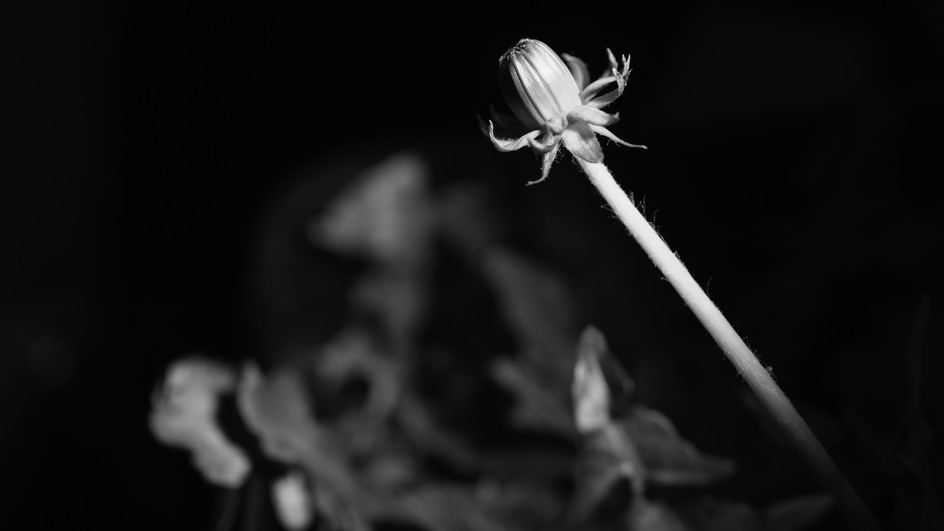
Visiting artist professor
2024 - 2025
Hicham Berrada
Born in 1986 in Casablanca (Morocco)
Born in 1986 in Casablanca, Morocco, Hicham Berrada is a graduate of the Beaux-Arts de Paris (2011) and Le Fresnoy - Studio national des arts contemporains (2013). His work combines intuition and knowledge, science and poetry, bringing into play experimental and scientific protocols in order to activate different natural processes and/or climatic conditions.
"I try to master the phenomena that I mobilise in the same way that a painter masters his pigments and brushes." Berrada has exhibited at the Louvre-Lens and the Hayward Gallery, London (2019), at the Yokohama Triennale (2020), and at the Bourse de Commerce in Paris (2023).
In his videos, installations and performances, he sets out to create new worlds by taming the laws of the world we know. These laws --whether mathematical, biological or chemical -- are orchestrated to generate landscapes halfway between the familiar and the strange. He defines his approach as that of a controller of energies, who chooses and arranges parameters, acting on temperature, luminosity or viscosity so that, within a defined framework, something happens. The result is always a collaboration between human intervention and physical, chemical and biological phenomena.
In applying the experimental method to artistic ends, he has played with the circadian rhythm of plants, stimulating dandelions to open in the middle of the night (Bloom, 2012) or, conversely, getting a night jasmine to exhale its scent during the day (Mesk Ellil, 2015). Underlying his work is a questioning of time, both in its physical dimensions and as human perception. This dimension goes hand in hand with a reflection on the impermanence of matter: everything is in constant motion, even bronze sculptures. Immersed in water and subjected to a weak electric current, they disintegrate into cloud-like swirls, condensing into a few months the damage that could be done to bronzes over several centuries in our atmosphere (Masse et Martyr, 2017). As for obsolete printed circuits that are now just computer waste, they melt back in the electrolytic bath, reorganising them- selves into little worlds of abundant, chiselled shapes (Permutations, 2021). The mineral is on the move, and the purely inorganic components
in Présages (2007--2024) show vivid, rapid real- time movements that we would instinctively attribute to living beings rather than to mineral products.
The strange interlacings of Augures Mathématiques (2019) and the enigmatic forms of Hygres (2023-2024) are hybrids, organic and inorganic together, made possible by 3D simulations that combine equations which simulate the development of different entities: roots, clouds, lichens. It is therefore possible for them to virtually exist in favourable conditions, according to morphogenesis, a scientific discipline that focuses on understanding how flows and forces make shapes, by translating them into mathematical formulae.
The forthcoming project at Le Fresnoy also explores the mathematical generation of forms and universes, through the creation of a virtual garden that emerges from a plane parallel to our physical reality. This strange, fantastical digital garden will take root and grow on a screen, where hybrid plants will flourish among unknown rocks, in a constantly changing ballet of colours and shapes, mirroring the data of a real garden. As if in interlocking worlds, it will shape itself according to the temperature and humidity conditions of a real garden, transforming the screen into a tangible variation, a parallel reality that is both phantasmagorical and strangely plausible.
This project embodies a bridge between the physical and digital worlds, representing a space where the boundaries between everyday material reality and the worlds of the mind are porous, inviting us to immerse ourselves in another place and dissolve the boundaries between the known and the unknown.



